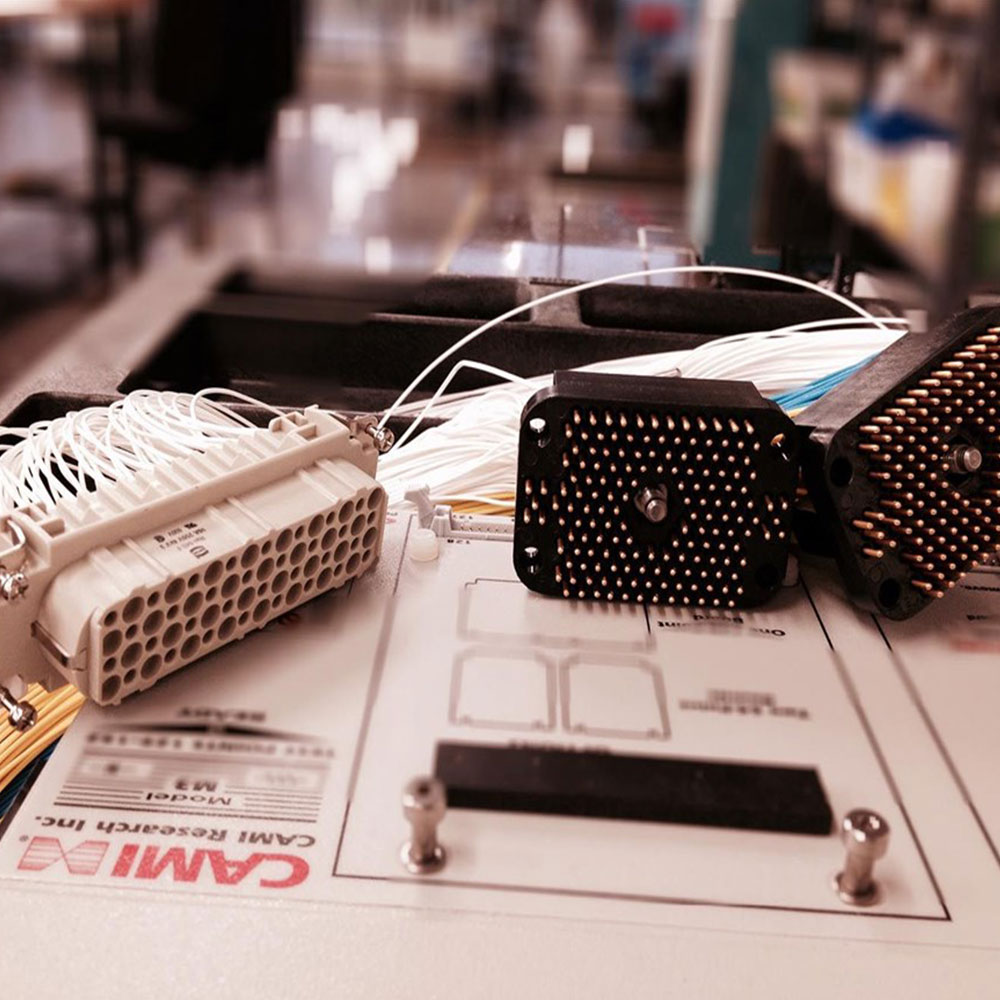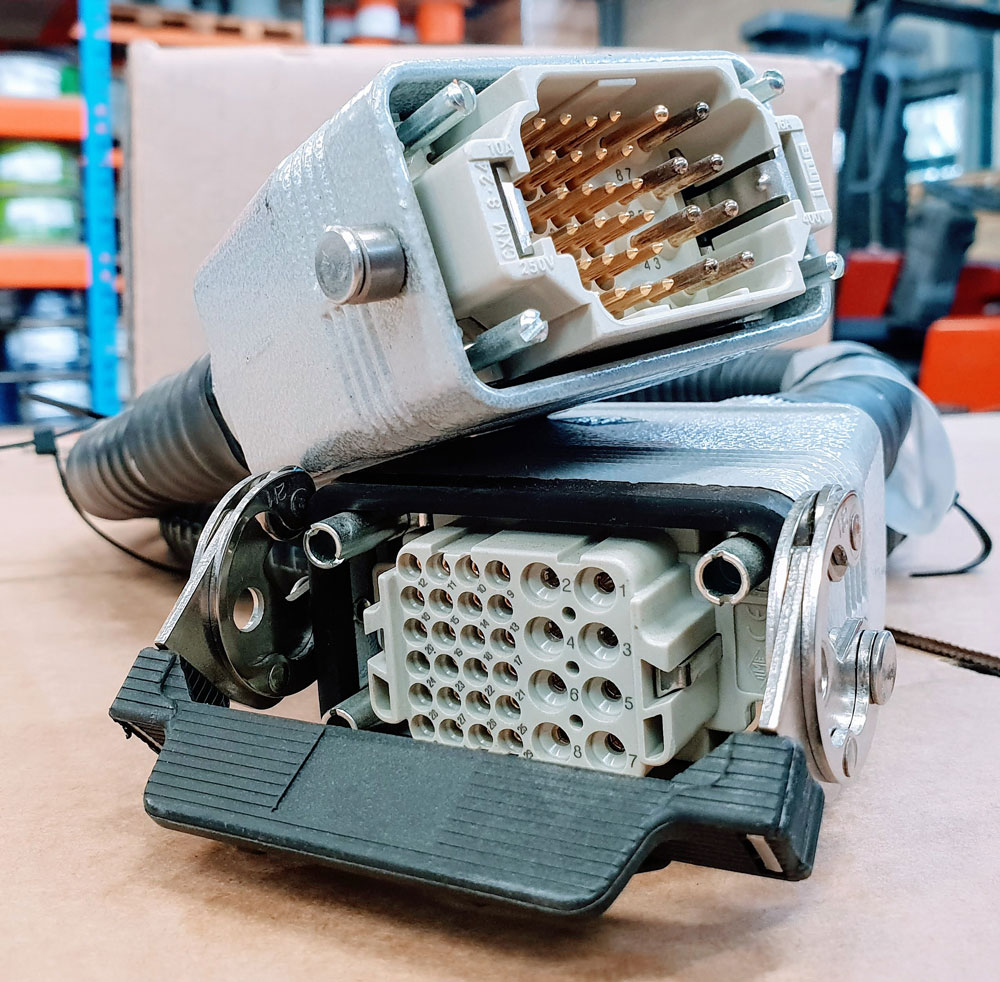Achieving 10 GΩ IR Measurements at 100 Vdc
Creative Use of Existing Instrumentation to Meet Exacting Requirement
by Christopher E. Strangio, CAMI Research Inc.
Overview
Measurement of insulation resistance (IR) occurs by applying a voltage between two conductors and observing how much current flows through the insulation. Dividing the applied voltage by the flowing current using Ohm’s law produces a value of insulation resistance.
Typical PVC or Teflon electrical insulation work extremely well, and as a result, only a miniscule current can be detected, so little, in fact, that we refer to the current as “leakage current” and need to raise the voltage to hundreds or thousands of volts to achieve detectible current flow. This, in fact, motivated the development of high voltage testers many years ago.
Recently, testing cables and connectors at high voltages poses some new challenges. Advances in electronic packaging often involve fitting complex circuitry into ever-smaller spaces, particularly in airborne or spaceborne applications. Consequently, the interconnects between increasingly compact electronic modules must shrink as well. NanoD connectors have typical contact spacing of 0.025” (0.635mm), half the spacing of microD connectors which themselves reflect a similar reduction in contact spacing from the generation before microDs appeared on the market.
As connector design forces pins into smaller spaces, pin spacing shrinks, and high voltage testing for proper electrical isolation between pins pushes the applied test voltage down to avoid air breakdown. Requirements presented by our customers over the last few years now require an IR of 10 GΩ at 100 Vdc, and this, in turn, demands a current measurement sensitivity of 10 nA or better.
The Method
My company’s CableEye ® HVX-21 multi-channel high voltage cable test system offers a leakage current sensitivity limit of 200 nA which we can reduce to 100 nA for special applications using a sample-averaging method we developed. However, we still remain unable to reach the 10 nA sensitivity required for new applications.
Rather than re-engineer the programmable high voltage power supply in our tester to meet the new requirement, we use an existing source measure unit (SMU) — a single-channel high-voltage test instrument, Keithley 2400-series SourceMeter™ SMU, which has the needed sensitivity, and provides a remote-control capability allowing us to integrate it with our existing control software. The successful result met our objective quickly and efficiently and offers increased-sensitivity IR measurements at a much lower test voltage than had previously been possible.

Figure 1
If the wiring matches the model cable and the connection resistances comply with the set limit, we disengage the low voltage module seen in the diagram through the relay matrix and drive a high voltage signal onto a distribution bus. Relays switch the high voltage stimulus signal onto the test points to which the UUT is attached. The system then sequentially applies high voltage to individual wires in the cable through the relay matrix while collecting leakage results from each wire tested.

Figure 2
Figure 3 shows how an external instrument, in this case the SMU, replaces our internal high voltage generator.
The SMU provides a high voltage stimulus needed to force current through insulation in the wire and has enough sensitivity to make the nanoampere current measurements we need.

Figure 3
Results
Figure 4 shows the on-screen test result from a special test board designed to demonstrate the measurement function. On this board, individual wires joining pairs of test points represent typical wires in a cable, and 1% precision high voltage resistors connect one end of each wire to ground. The precision resistors represent leakage. Each measurement completes in about five seconds.
Although we use resistors here to represent leakage, in a realistic application where we check the performance of wire insulation, we would typically set a tolerance limit of, for example, 10% to ensure that the insulation resistance does not fall below 10 GΩ less 10% (9 GΩ). In practice, wire insulation will exhibit much higher resistance than the lower limit we set, so failing a test like this would generally indicate a serious problem like the presence of moisture, clearance problems between pins, contamination present between pins or wires, or thinned or otherwise compromised insulation.

Figure 4
Precautions
When testing for leakage above 1 GΩ, the relative humidity could add parasitic leakage to the measurement. We suggest employing a temperature/humidity sensor when making high-resistance leakage tests to document ambient conditions on the test report along with insulation resistance values. We recommend connecting an environmental sensor to a USB port to report real-time, continuous measurements of temperature and humidity alongside the IR data.
While the relay matrix itself, as well as the internal wiring, and lead wires connecting the meter to the CableEye tester, could contribute parasitic leakage to the measurement, careful testing in our test lab with no UUT attached provided assurance that such leakage as may exist comes in at the level of background noise and has no effect on the intended UUT measurement.
During the test, the UUT itself should be placed on an insulated surface and situated away from the presence of external electromagnetic interference (EMI). Because of the miniscule currents we measure during this test and the fact that a cable, particularly a long one, may act as an antenna, be aware of the potential for induced noise from switching power supplies, electric motors, nearby radio transmitters, and overhead lighting. Testing shielded cables provides some protection against the effect of external EMI.
A test operator carelessly handling connectors on the UUT affords another potential risk. Contamination from oils on the skin or substances in the environment creates an opportunity for parasitic leakage between connector pins. Given the miniature size of connectors subject to a 10 GΩ test, the risk becomes low, but not zero.
Summary
Combining the best qualities of two different off-the-shelf instruments to measure extremely low leakage currents in multiconductor cables provides test capability that would be otherwise very difficult to achieve. Doing so also requires awareness of environmental conditions that, for less stringent measurements, would have no adverse effects on the test results, but for highly sensitive tests as described here, could cause artificially low IR results leading to rejection of an otherwise passing assembly.
To learn more about the software that drives the tester described in this artcle, click the button below.
CableEye Testers for Checking Connection Resistance
With the exception of M2-series testers, all models of CableEye testers can be used to check the quality of good connections and good non-connections (i.e. isolation).
CableEye Testers with HiPot Capability
CableEye Testers with 4-Wire Measurement Capability
M4
4-Wire measurement capability with ±0.02 Ω resolution is a standard feature.
HVX Series
Advanced Measurements Option, Item 833, includes 4-wire measurement capability with ±0.02 Ω resolution. This option must be ordered at time of purchase of the control module.4-Wire Kelvin Resistance Measurement Option, Item 832, provides 4-wire measurement capability with ±0.001 Ω resolution. This option can be retrofitted.
CableEye ® Automation-Ready Cable and Wire Harness Test Systems
CableEye testers are highly versatile, expandable and upgradable diagnostic and Pass/Fail check Cable and Harness Test Systems that are PC-based. They are used for assembly, prototyping, production, and QC of standard or custom wire cables and harnesses The entire suite of products is powered by the same easy-to-use operating software and, with the help of its signature easy-to-interpret color-coded graphics, instantly identifies not only when there is a fault, but what type of fault and where.
Low Voltage M2 Series
For diagnostic and Pass/Fail Testing - Find, display, log, & document continuity (opens, shorts, miswires, intermittent connections).
Low Voltage M3 Series
For all of the above plus resistance (contact, isolation, embedded), and diodes (orientation, forward voltage, reverse breakdown).
Low Voltage M4 Series
For all of the above plus precision resistance (4-wire), and capacitance (twist wire relationship, length of cable, length to break, capacitors).
Low Voltage and High Voltage HVX Series
For all as described for M3 plus HiPot (dielectric withstand voltage and insulation resistance). 4-Wire Kelvin Measurement and Advanced Measurement Options (capacitance, twist wire relationship, length of cable, length to break, capacitors) are available.
Try One!

photo credit: Progressive Image

photo credit: AP Technology
"Our production guys find it simple to setup and use. Our clients love it as it provides complete traceability for each and every cable assembly we manufacture."
AP Technology, UK